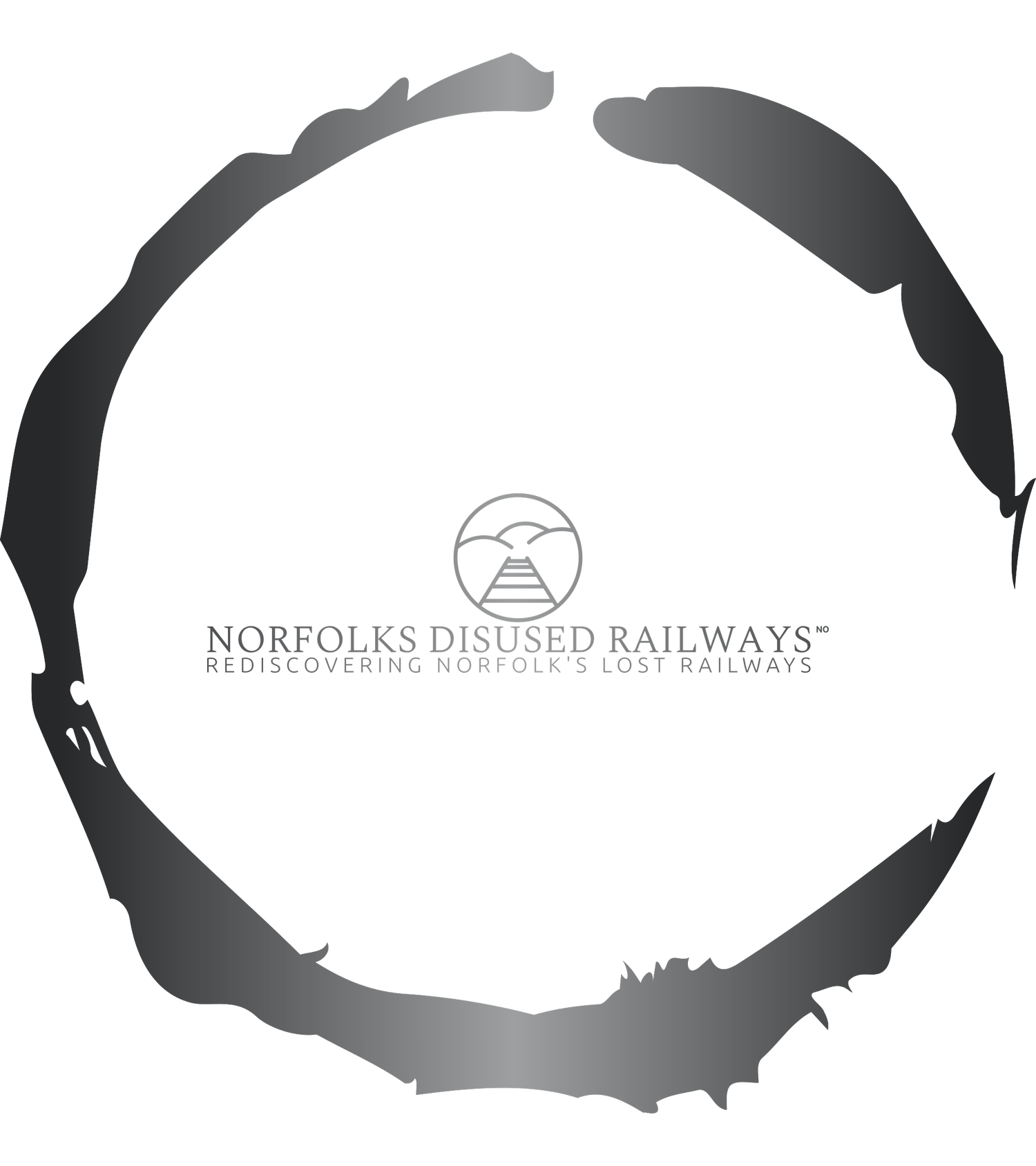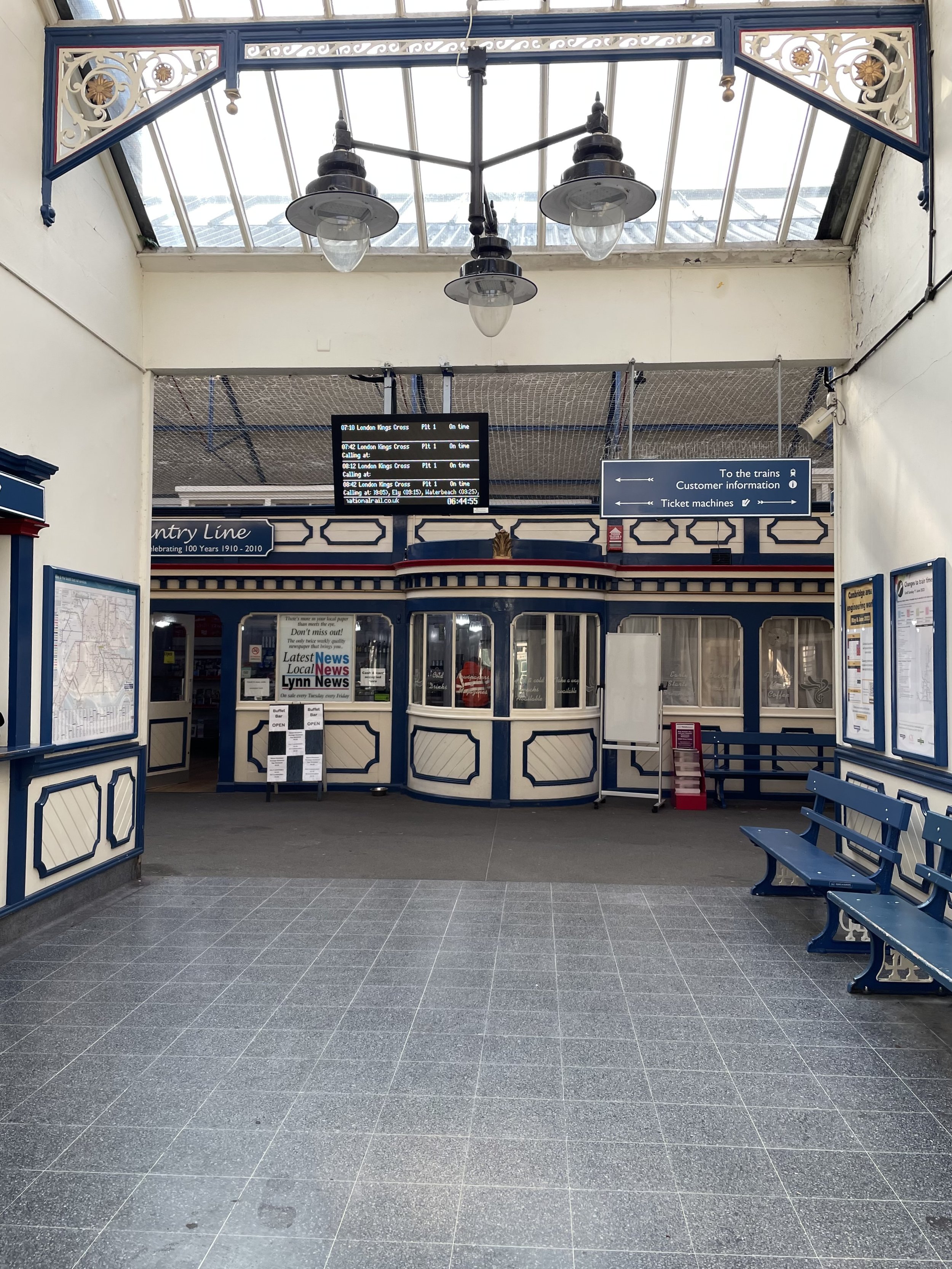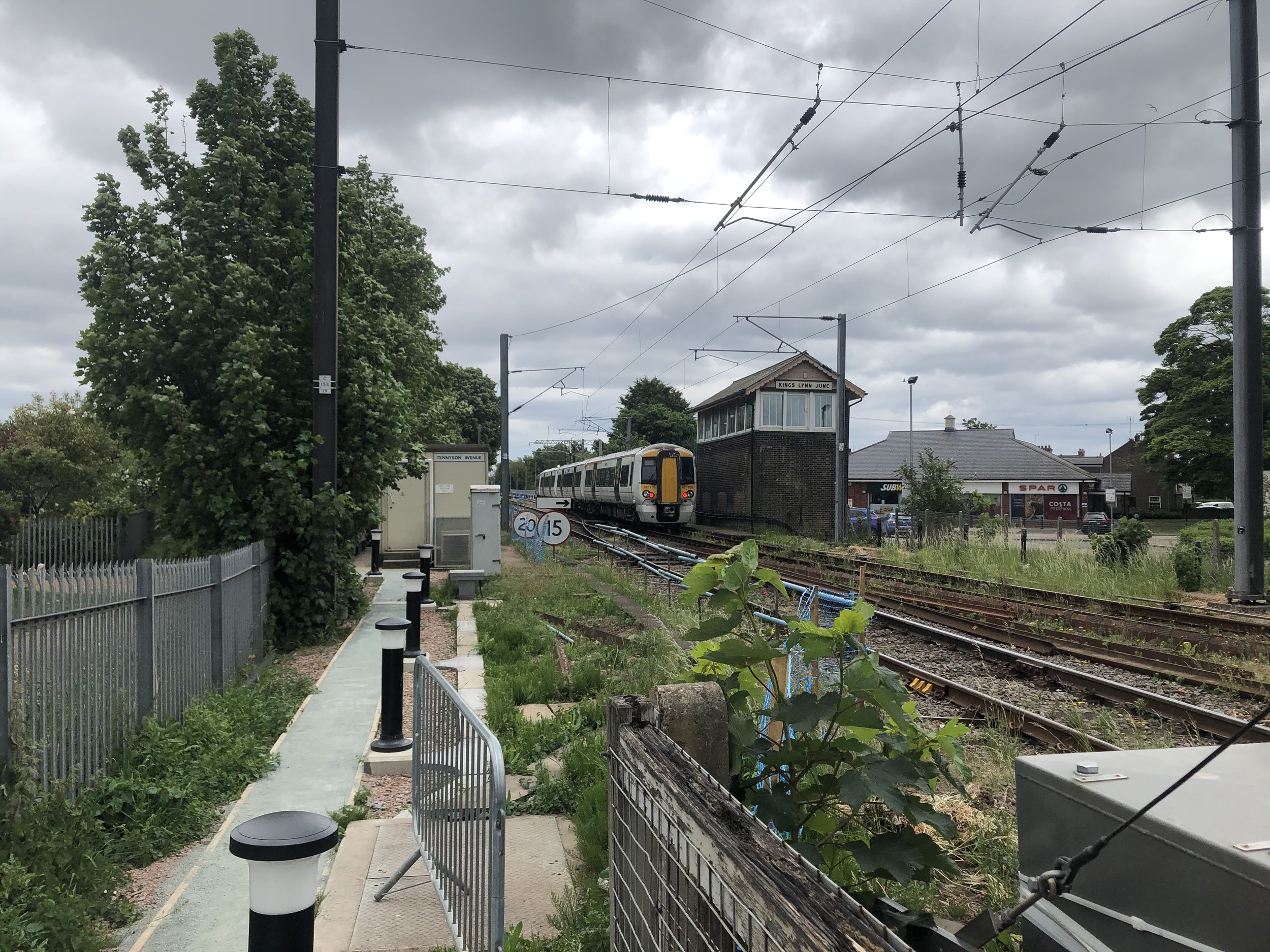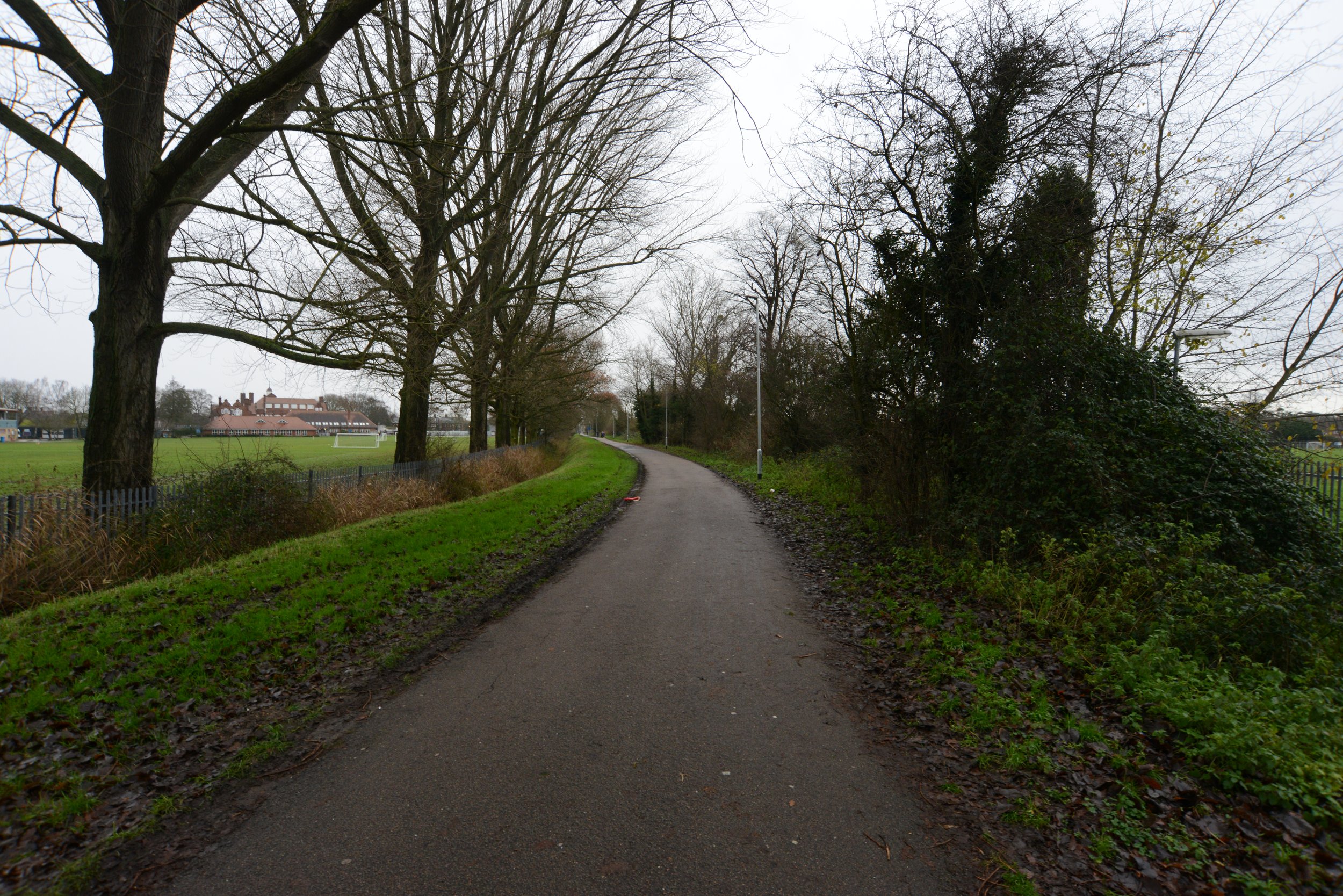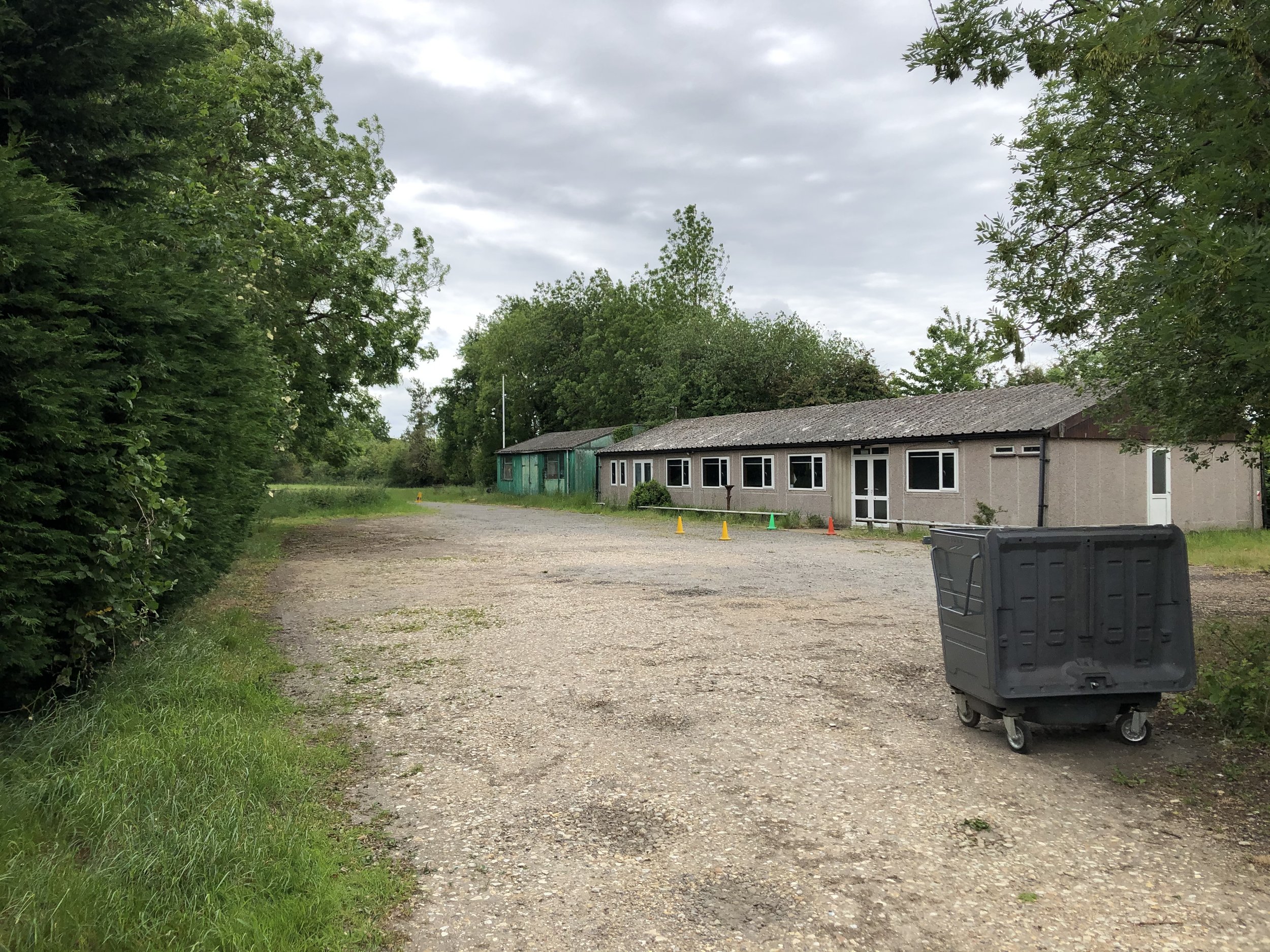1862-1969

To navigate through the route, kindly make use of the navigational icons located below that correspond to each part of the route.
Home
King’s Lynn to North Wootton
North Wootton to Wolferton
Wolferton to Dersingham
Dersingham to Snettisham
Snettisham to Heacham
Heacham to Hunstanton
Hunstanton Terminus
WELCOME TO PART ONE
KING’S LYNN TO NORTH WOOTTON
King’s Lynn Station
Located on the East Coast, this port and market town was called Bishops Lynn in the 15th century.
The origins of Bishops Lynn date back to the 10th century, but the first recorded mention of it was in the 11th century.
King's Lynn Station was in Norfolk, the original station opened in 1846 after the Lynn, Ely railway line opened.
Back in the day, this was just a basic wooden structure.
The Dereham line was created during the years 1846 & 1848.
Another branch, starting from Watlington (previously called Magdalen Road), began operating in 1848 and provided transportation services to Wisbech and March, also originating from King's Lynn. Furthermore, the Hunstanton line originating from King's Lynn was established in 1862, and the South Lynn M&GN station was built in 1865.
Then in 1871, several companies collaborated to create a more durable station, resulting in the present-day terminal we now witness.
The recently built station now has two island platforms, each with four dead-end lines in between and bays on both sides. It has replaced the old wooden structure that previously stood in its place.
Even though it is a Terminus, King's Lynn used to see many trains continuing to Hunstanton from the Lynn-Ely Line and the M&GN at South Lynn via a shuttle line, which is also covered on this website.
The summer months were particularly busy, with restaurant cars and royal services heading towards the Norfolk coast.
Also at the end of King's Lynn station, there was a vast goods yard that could be accessed through the King's Lynn junction by the signal box. Furthermore, a junction existed where the railway connected to the Lynn Docks branch.
Between the goods lines and the bay platforms lay King's Lynn's engine sheds. This brick-built structure featured four roads and accommodated a variety of engines, including numerous royal engines. By the 1950s, the sheds were capable of accommodating many locomotives. Also, at Kings Lynn, there was another small engine shed to the south side called the Royal engine shed.
This was used to stable the green Claude engines, usually numbers 8783,8787, whilst they were not at work with Royal duties when the royal family were down at Sandringham.
Many Royal services had engines waiting at Kings Lynn to attach onto the rear and take the special services off to Wolferton to save time.
When the Royal Funeral trains departed from Wolferton station, a second engine would be attached to the rear of the train at King's Lynn. This allowed the special funeral train to be taken to London without waiting for the engine to turn around, saving valuable time and reducing security risks associated with the train being stationary at the platform.
Trains were stabled at King's Lynn, as Wolferton had no facilities for maintaining and keeping the engines in pristine condition. Fit for the royal family. However, in 1959, the sheds were closed to steam locomotives.
Access to the sheds was only possible through the junction located near the signal box.
During the early days of the station, there was a signal box located at the east end of the platforms in King's Lynn, along with a significant semaphore signal system. The first signal box was King's Lynn station, sited at the platforms' East end.
This signal box had a 76-frame Saxby & farmer frame.
Both the box and the signal have been demolished.
As the trains left King's Lynn, they passed by the engine sheds and goods yards before reaching King's Lynn Junction. At the junction, they continued straight ahead to Dereham, crossing underneath the footbridge. On the left, you can see the Hunstanton Branch, while the Ely-Cambridge line heads off to the right. The Hunstanton trains beared off to the left off to its next destination North Wootton.
At the junction, there was the second signal box, King’s Lynn Junction Box. The King’s Lynn Junction box was said to have housed an 80-lever frame.
Down the line at the Harbour junction was another small signal box that controlled the M&gn connection from the south Lynn station that linked up to the Fen line for Hunstanton trains to travel to Spalding and Peterborough via Sutton Bridge.
This small box had a 36 Saxby frame installed inside the signal box.
King's Lynn station today.
King's Lynn station has remained mostly unchanged to this day. It still offers an hourly service into London via Cambridge & Ely, and also had a morning service to London Liverpool Street.
The Ely-Cambridge part of the line was electrified in the 1990s, linking the line to London for electric through trains, eliminating the need for either changing trains or the train changing the locomotive at Cambridge. I remember travelling to London as a child from King's Lynn and changing from a class 47 Diesel loco to an electric locomotive at Cambridge.
The café at King's Lynn station remains open and used daily. In 2010, the café celebrated its centenary anniversary.
There are still four railway lines serving King's Lynn station, with two used for stabling duties. Platform one is the primary platform used for the daily services in and out of the platform to the capital. Platform two was used for Hunstanton and Dereham services, now used primarily for early morning services and late night arrivals.
The Hunstanton branch line has long been taken up, and there is no trace whatsoever that a line once left King's Lynn for the Norfolk coast. The Dereham line is still in use as far as Middleton Towers from King's Lynn junction for freight carrying silica sand to glass production plants.
The King's Lynn docks line has also closed, and part of this long lost freight line remains that the freight trains from Middleton towers still use as a turnaround point before heading off towards Ely junction.
Once closed to passengers, the M&GN stayed open for the Sugarbeet factory at South Lynn for freight movements. South Lynn station has been demolished, and no sign of the old station is left.
Two steel bridges at South Lynn, the old Shuttle Line Bridge, and an old bridge left behind from the M&GN can be seen on a dedicated page to South Lynn. The vast goods yard and the engine sheds have long been demolished and are now built over with a supermarket and other shopping outlets. The old malt house remains and has now been converted into private flats.
Out of the three signal boxes, only one remains and, at this time, is still in daily use at King's Lynn junction. Sadly, in time, this box is expected to close, and a control centre at Cambridge will take control of the junction and the level crossing. Just past the level crossing on the old Dereham line, a new stabling point has been built to stable 8-car EMU trains that are now used on the Lynn to London Fenline, replacing 4-car units.
1846-1848, The Lynn to Dereham railway line opened with King’s Lynn wooden built station.
1862, the Lynn Hunstanton Railway opened.
1865, the M&GN South Lynn Station opened.
1871 The station that is still in use today opened.
1911, the station changed its name from Lynn to King's Lynn.
1959 The M&gnjr line closes.
1968, the Dereham branch closes.
1969 May, the Hunstanton branch closes.
1992, the line to now London King's Cross is electrified between London King's Cross & Cambridge.
King’s Lynn station Layout
Dated 1892-1914
Thanks to the national library of Scotland.
Kings Lynn station aerial
Views past & present
I would like to express my gratitude to Historic England for providing the Embed code that enabled me to use the aerial photos displayed below.
Thanks to Historic England for the aerial photo. Please click on the photo for a link to the source page.
Photographer unknown
Thanks to Historic England for the aerial photo. Please click on the photo for a link to the source page.
Kings Lynn station past & present
King’s Lynn railway station roughly in the late 1960s
King’s Lynn railway station Photographed in 2020
King's Lynn station early morning, taken in between the Christmas and the new year break in 2022
King’s Lynn station Foyer year unknown but in the Days of LNER with destinations to Hunstanton.
Dereham,Norwich,Yarmouth,Lowestoft,
Wisbech,Peterbrough and off to the east coast main line to Doncaster York.
Ely Cambridge and back in the Day Liverpool street (Services still run but now to London King’s Cross)
Sourced from FaceBook Under licence Credit-Photographer and year unknown
King’s Lynn station foyer and cafe in 2023
"There are a few pieces of railway memorabilia on display at King's Lynn."
Credit Lewis Collard via Wikimedia.
South Lynn station
South Lynn station used to bring in many day excursion services into King's Lynn and then off towards Hunstanton via a shuttle line that linked up the M&GN to the Lynn Ely Fenline. We would like to express our gratitude to Ben Brooksbank for sharing the picture of Ex-GE B12/3 4-6-0 on a rail tour at South Lynn.
© Copyright Ben Brooksbank and licensed for reuse under this Creative Commons Licence.
King’s Lynn Platforms Past
In this photo, we can observe a steam excursion train arriving at King's Lynn during the 1950s. It is believed that this train was the Hunstanton excursion service. Additionally, the image features the Signal box and one of the semaphore signals.
Ben Brooksbank, CC BY-SA 2.0, via Wikimedia Commons
A Hunstanton or Dereham Bound DMU on Platform 2 at King’s Lynn.
In 1992, an EMU was parked on platform 2, where most Dereham services departed from; this photo was taken shortly after the completion of the electrification of the line from Ely and Cambridge.
© Copyright Ben Brooksbank and licensed for reuse under this Creative Commons Licence.
King’s Lynn Platforms Present
In the past, the Hunstanton trains would leave from Platform 2 located at King's Lynn station.
Additionally, trains heading to Dereham and Wisbech and March also departed from this platform. Currently, Platform 2 is utilized for stable trains and peak-time departures to London King's Cross. Platform 1 is the most frequently used platform at King's Lynn for London-bound services.
King’s Lynn Platforms one and two with class 387’s stabled up
Creative Commons CC0 1.0 Universal Public Domain Dedication Lewis Collard
Platform One King’s Lynn
Kings’s Lynn Junction
Kings Lynn Junction Historic Maps
The Hunstanton Branch Line branches off at King’s Lynn junction, which can be seen at the top of this map.
Once departing from King's Lynn station, the trains quickly approach Kings Lynn Junction, where the Docks branch intersects just before the Tennyson Avenue level crossing. At this junction, the Hunstanton line veers off to the left, followed by the Lynn, Ely, and Cambridge line to the right. The Dereham bound line continues on a south-east trajectory.
During King's Lynn's prosperous times, King's Lynn Junction featured the Dereham Swaffham Branch, which extended straight ahead. The Hunstanton branch was to the left, while the London Cambridge line was to the right.
A freight train with double engines has just arrived at King's Lynn junction from Middleton Towers via the Dereham branch.
The Hunstanton branch can be seen to the left.
King’s Lynn Junction after the Hunstanton railway line had been lifted.
The King's Lynn Junction looks quite different in 2020 compared to the past. The Hunstanton branch junction is no longer present, and a considerable number of sidings from the Dereham branch have also disappeared.
The Dereham line, which appears to continue straight ahead, serves as a resting place for 8-car units that have been in operation between King's Lynn and Cambridge since 2020. Additionally, it is still utilized as a freight line up to Middleton Towers.
Off to North Wootton
Here we can see where the Hunstanton line would have run from the King's Lynn junction before it was sadly closed. However, I couldn't find any trace of the old track bed for the Hunstanton trains. This photo was taken in December 2020.
Leaving King’s Lynn Junction, the track veered left towards Gaywood crossing, passing two of King’s Lynn's school’s and going under a footbridge.
This picture shows a steam engine heading around the curve towards Gaywood junction, with the line here still doubled-tracked.
The year is unknown.
The credit for this photograph is unknown and was supplied via a Facebook group.
What's said to be a Royal train, a Claud 4-4-0 number 2614, going through Gaywood heading towards North Wootton on to its destination.
Royal Wolferton station.
The old track bed at King’s Lynn is now a cycle path and public foot path up to where the railway would have once crossed over the road at Gaywood crossing.
During my walk along this old route, I came across two concrete structures, one an old war spigot.
Also found was this concrete support hidden in the overgrowth. It could be a support from the footbridge or one of the old Semaphore signals. However, it is more likely a remnant of the old footbridge."
Please if you have any information, please get in touch.
Gaywood Crossing
The King's Lynn to Hunstanton railway once had a level crossing over the A148 Gaywood/Lynn road. The only remaining part of the railway is the crossing cottage.
Google Maps position of the level crossing.
Thanks to the National Library of Scotland
Approaching Gaywood Road crossing
Historic photos showing the crossing whilst in use.
All pictures credited Photographer unknown & donated via Facebook
View of what was Gaywood crossing in October 2020
Gaywood crossing cottage in 2020.
Heading off from the crossing towards North Wootton
We walked in the direction of the North Lynn housing estate after passing the site where the old level crossing used to be. We went past the petrol station and the bowling alley, and the path was still visible. However, some of the space that used to be occupied by the railway line has been taken up by the construction of the fuel station.
After passing the petrol station, we came across a bridge crossing the Gaywood river. It seems that the original bridge has been replaced with a newer footbridge when visiting in 2020. The brickwork visible below might have been a part of the King's Lynn to Hunstanton Railway that used to cross this small river just outside King's Lynn.
Salters road Junction
Before reaching Lynn Sport, you will come across Salters Road. According to maps from the 1900s, there was a plan to connect the M&GN South Lynn-Fakenham-Melton Constable line to a new station in Kings Lynn town centre. This junction would have crossed the Hunstanton branch line and used part of the Docks railway. However, the line was later abandoned, as can be seen on 1900s Ordnance Survey maps. Salters Road used to pass over the Lynn Hunstanton branch, but it now ends at Lynn Sport. The other part of the road can be found across the North Lynn Housing estate, just off the Main Columbia Way road on the other side of the estate. On Google Maps, the area where the abandoned line used to run is now part of the Greenland Park housing development. As of April 2022, there is no trace of the junction that was supposed to be there. During the railway days, the land in this area was clear, as can be seen in historical maps. However, it is unclear if there was a level crossing or a small unmanned crossing in this location. I searched the internet and books but could not find any information.
More information on Salters Road can be found on a web page dedicated to the King’s Lynn Docks Railway.
Salters Road past map dated the early 1900s showing the abandoned railway.
Salters road crossing
Salters road, taken in April 2022
You can see Salters Road here in these pictures in April 2022
The road bollards are roughly where the old Hunstanton line would have once run.
At this point, was there a level crossing? Please feel free to get in contact. Any information is very helpful.
Lynn Sport
The Kings Lynn Hunstanton track bed still exists as a cycleway and is clear for use until we reach the spot where the Lynn sports complex was built. This complex was constructed over the exact location where the railway line was once situated. Lynn Sport was opened in August 1991, and it blocked any possibility of reopening the line at this point.
During my visit to Lynn sport, there was a miniature railway on the site, but it was not related to the King's Lynn to Hunstanton railway.
North Lynn
In this picture, we can see the North Lynn housing estate, which appears to be newly built. The Hunstanton Line can be seen running towards the right side of the image. It is noticeable that there is no industrial estate or new bypass in the picture. Although the year is not known, it can be inferred that the line is doubled, indicating that the picture was taken before 1967. Unfortunately, the credit for this picture is unknown.
Next, we will continue our journey by going down the side of the North Lynn housing estate, specifically down the side of Reid Way. It appears that the construction of this housing estate took place in the late 1950s or early 1960s. In its early days, the railway used to run through open countryside in this area.
North Lynn Reid way.
The old track bed seen here is now used as a busy cycle path.
We are currently observing the beginning of the cycle path from the opposite side of the bypass marked as A1078, leading to Kings Lynn. To locate the start of the cycle path, you can spot it beside the dog waste bin. It is worth noting that the bypass was not present when the line was operational. The bypass was constructed and opened in the early 80s mainly for docks traffic and to restrict HGVs from entering the town centre. In the event of reopening the railway, this location would require a new level crossing to be established for the railway to cross over the road.
50/50 map coverage of where the A078 now sits over where the railway once ran.
After North Lynn and the A1078, the Kings Lynn to Hunstanton line went through private farmland, and all I can see is that it's now used as private farm tracks and farmland up till North Wootton station.
Just before Wootton Halt station is the North Wootton Scout and Guide Hut. It was built on the site where the old railway sidings of North Wootton were once located.
